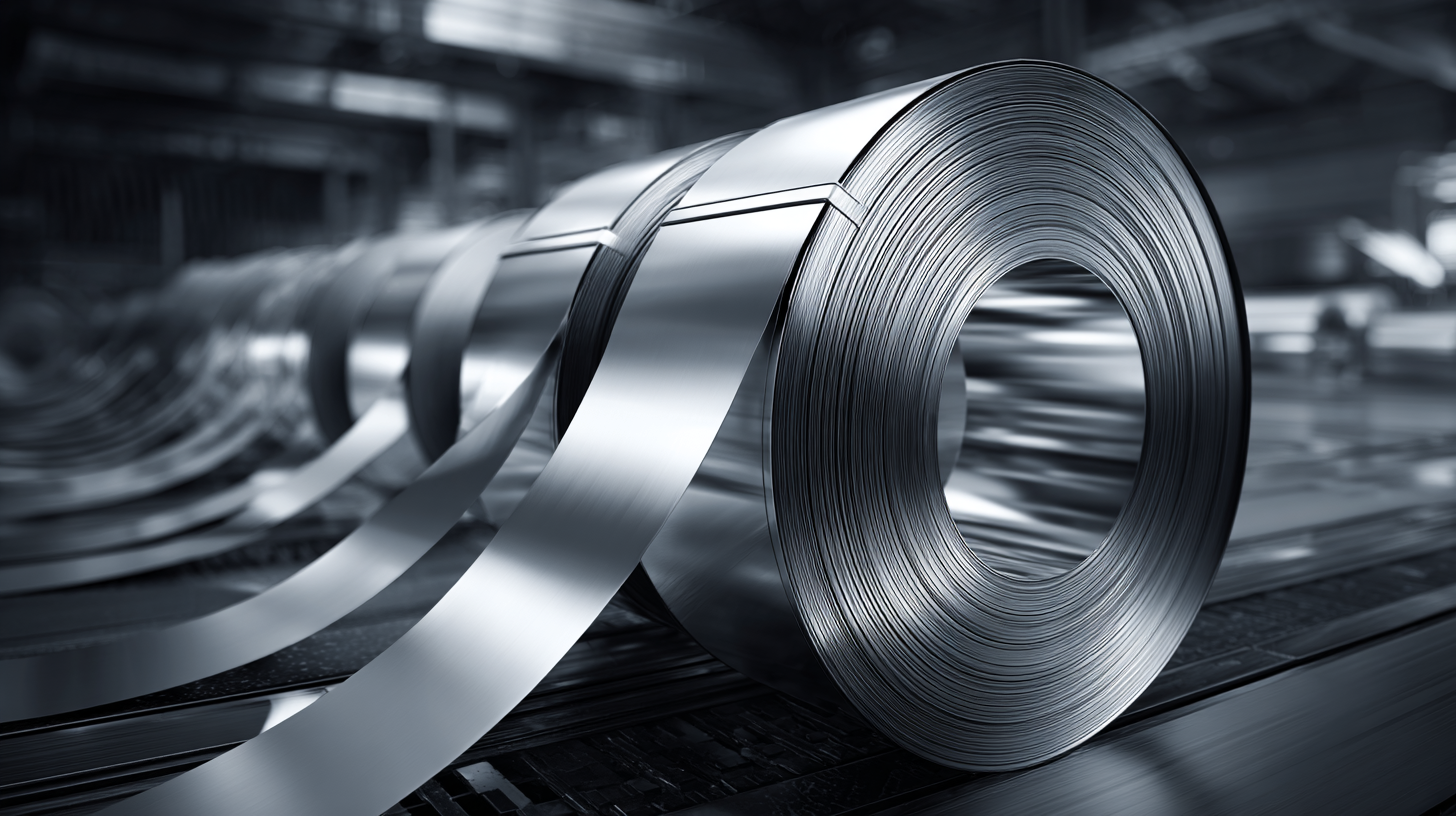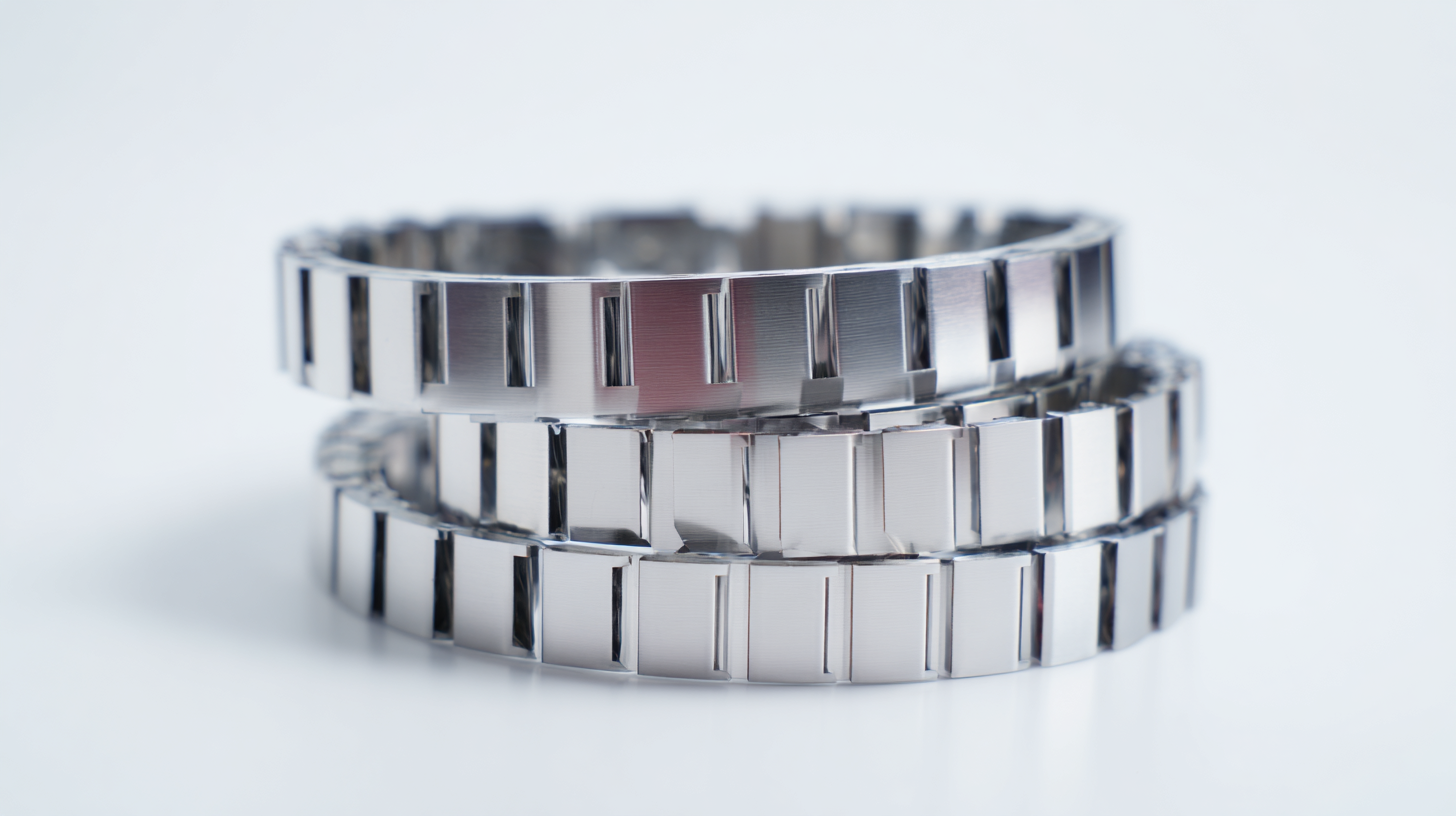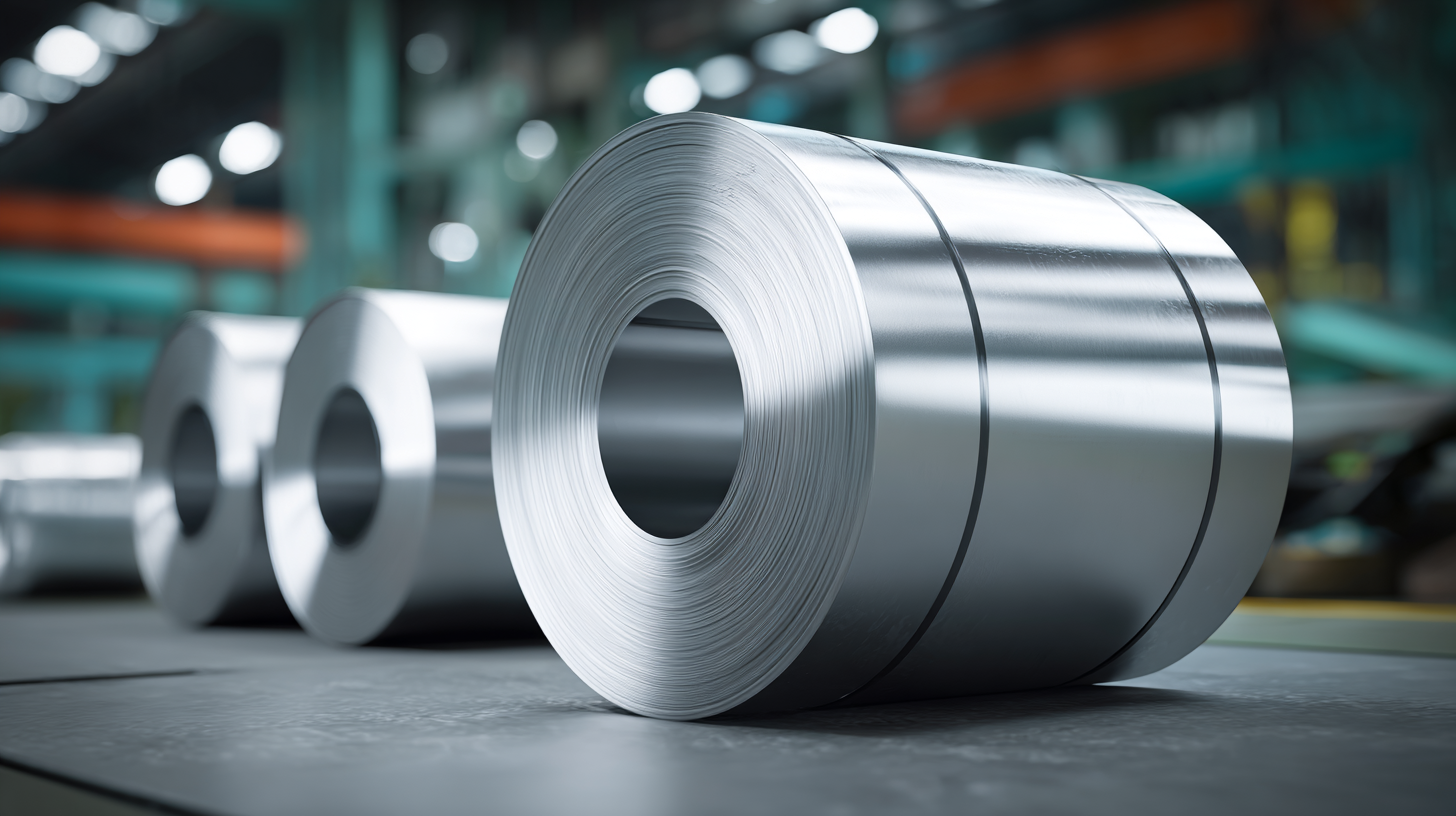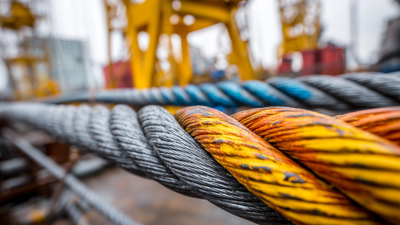Exploring the Benefits of 316l Stainless Steel Belt for Industrial Applications
The emergence of advanced materials in industrial applications has led to significant innovations in manufacturing and processing technologies. Among these materials, the 316L stainless steel belt stands out due to its exceptional corrosion resistance and mechanical properties.
According to a report by MarketsandMarkets, the global stainless steel market is projected to reach USD 158.6 billion by 2026, underscoring the increasing demand for high-performance materials in various sectors.
 The 316L stainless steel belt’s low carbon content not only enhances its durability but also minimizes the risk of carbide precipitation during welding, making it ideal for use in harsh environments such as chemical processing and food manufacturing. With its remarkable resistance to pitting and crevice corrosion, this type of belt is crucial for applications that require integrity and reliability.
As industries continue to prioritize efficiency and sustainability, the adoption of 316L stainless steel belt technology is likely to grow, paving the way for enhanced operational performance and resource management.
The 316L stainless steel belt’s low carbon content not only enhances its durability but also minimizes the risk of carbide precipitation during welding, making it ideal for use in harsh environments such as chemical processing and food manufacturing. With its remarkable resistance to pitting and crevice corrosion, this type of belt is crucial for applications that require integrity and reliability.
As industries continue to prioritize efficiency and sustainability, the adoption of 316L stainless steel belt technology is likely to grow, paving the way for enhanced operational performance and resource management.
Advantages of 316L Stainless Steel Belt in Corrosive Environments
316L stainless steel belts are engineered to withstand extreme conditions, making them particularly advantageous in corrosive environments. Their low carbon content enhances resistance to pitting and crevice corrosion, which is essential in industries dealing with aggressive chemicals or saline environments. This unique property allows for extended service life and reliability, reducing the need for frequent replacements and maintenance.
In the context of evolving industrial needs, such as those highlighted in recent advancements in liquid level monitoring technology, the durability and corrosion resistance of 316L stainless steel can play a vital role. As processes in sectors like biomedical, food processing, and environmental protection become more complex, the capabilities offered by 316L materials ensure that monitoring equipment remains functional and accurate, even when exposed to harsh conditions. Thus, incorporating 316L stainless steel belts in industrial applications can significantly enhance operational efficiency and safety.
Benefits of 316L Stainless Steel Belt in Industrial Applications
The following chart illustrates the advantages of using 316L stainless steel belts in various corrosive environments, showing resistance levels and durability compared to other materials.
Cost-Effectiveness of 316L Stainless Steel Belts in Long-Term Industrial Use
The cost-effectiveness of 316L stainless steel belts is increasingly recognized in various industrial applications. Unlike traditional materials, 316L stainless steel offers unparalleled durability and corrosion resistance, which translates to lower maintenance and replacement costs over time. This makes it an ideal choice for industries that require long-lasting solutions capable of withstanding harsh environments. The initial investment may be higher, but the long-term savings in operational costs are significant, positioning 316L stainless steel as a wise financial decision.
**Tip:** When considering materials for industrial applications, always evaluate the total cost of ownership, including maintenance and replacement cycles, rather than just the upfront cost.
In addition, advances in manufacturing technologies, such as 3D printing, have made it easier to produce bespoke 316L stainless steel belts tailored to specific operational needs. This has opened up new possibilities for customization, allowing businesses to enhance their production efficiency while reducing waste. As companies continue to seek cost-effective solutions, the adoption of 316L stainless steel will likely grow, driven by its robust performance and economic benefits.
**Tip:** Keep an eye on emerging technologies that could lower production costs further and increase the accessibility of high-quality materials like 316L stainless steel.

Comparative Analysis: 316L vs. Other Stainless Steels in Manufacturing
When comparing 316L stainless steel with other stainless steels used in manufacturing, its superior corrosion resistance stands out. 316L, an austenitic stainless steel, contains molybdenum, which enhances its ability to withstand aggressive environments, including saltwater and acidic conditions. This makes it particularly advantageous for applications in the marine, chemical processing, and food industries, where exposure to corrosive substances is common. In contrast, lower-grade stainless steels, such as 304, may not perform as well in these demanding environments, as they lack the same level of resistance, which can lead to increased maintenance costs and operational downtimes.
Another significant advantage of 316L is its ability to perform well under high-temperature conditions while maintaining its structural integrity. This makes it more suitable for applications that require high thermal resistance, such as in the automotive and aerospace sectors. Meanwhile, other stainless steels like 410 exhibit poorer high-temperature performance and are more prone to rust and scaling. The combination of strength, durability, and versatility in 316L stainless steel positions it as a top choice for many industrial applications, further establishing its reputation over alternative materials in the manufacturing landscape.
Performance Metrics: Strength and Durability of 316L Stainless Steel Belts
The performance metrics of 316L stainless steel belts make them an essential component in various industrial applications. Known for their exceptional strength and durability, these belts withstand harsh environments without compromising structural integrity. Data from the International Stainless Steel Forum (ISSF) indicates that 316L offers high tensile strength, often exceeding 500 MPa, and possesses excellent resistance to pitting and crevice corrosion, making it ideal for chemical processing applications.
 One of the key advantages of 316L stainless steel is its low carbon content, which enhances its corrosion resistance and improves weldability. This characteristic is particularly beneficial in industries where hygiene and safety are paramount, such as food processing and pharmaceuticals. Additionally, a report by the Stainless Steel Development Association highlights that these belts can operate effectively in temperatures ranging from -200°C to 800°C, indicating their versatility across various industrial processes.
One of the key advantages of 316L stainless steel is its low carbon content, which enhances its corrosion resistance and improves weldability. This characteristic is particularly beneficial in industries where hygiene and safety are paramount, such as food processing and pharmaceuticals. Additionally, a report by the Stainless Steel Development Association highlights that these belts can operate effectively in temperatures ranging from -200°C to 800°C, indicating their versatility across various industrial processes.
Tip: Ensure that when selecting a 316L stainless steel belt, you consider the specific operating conditions and the chemical compatibility of the materials being conveyed.
Moreover, regular maintenance practices, such as routine cleaning and inspection, extend the lifespan of steel belts, ensuring they maintain their performance metrics over time. Investing in high-quality 316L belts not only enhances operational efficiency but also reduces long-term costs associated with replacements and repairs.
Tip: Implement a preventive maintenance schedule to identify wear and tear early, ensuring optimal performance and durability of your stainless steel belts.
Sustainability Benefits of Using 316L Stainless Steel in Industrial Applications
The use of 316L stainless steel in industrial applications offers significant sustainability benefits. Known for its superior corrosion resistance and durability, 316L stainless steel minimizes the need for frequent replacements, reducing waste and conserving resources. Its longevity also leads to lower maintenance costs, thereby providing an economic advantage over time. Additionally, 316L stainless steel is fully recyclable, aligning with the growing emphasis on sustainable manufacturing practices and circular economy principles.
Tips for maximizing sustainability with 316L stainless steel include selecting components designed for energy efficiency. Investing in equipment like reciprocating scraped surface heat exchangers can improve heat transfer efficiency, thereby reducing energy consumption. Furthermore, consider establishing a recycling program within your facility to ensure that leftover stainless steel from production processes is properly repurposed. This not only enhances your company’s sustainability credentials but can also lead to cost savings in material procurement.
By embracing 316L stainless steel and its inherent sustainability benefits, industries can significantly enhance their environmental footprint while also achieving operational efficiency. Integrating such materials into your production processes is a strategic move toward a more sustainable future.
Exploring the Benefits of 316L Stainless Steel Belt for Industrial Applications
| Application |
Benefit |
Sustainability Impact |
Durability |
Corrosion Resistance |
| Food Processing |
High hygiene standards |
Recyclable material |
Excellent mechanical properties |
Strong resistance to acids and alkaline solutions |
| Chemical Processing |
Prevention of contamination |
Long lifespan reduces waste |
Highly durable under harsh conditions |
Outstanding corrosion resistance |
| Pharmaceutical Manufacturing |
Compliance with regulatory standards |
Minimizes environmental footprint |
Long-term stability |
Resistant to various solvents |
| Oil and Gas Industry |
Enhanced safety measures |
Energy-efficient manufacturing |
High impact resistance |
Exceptional resistance to seawater |
| Construction |
Aesthetic appeal |
Sustainable sourcing options |
Resilient in structural applications |
Long-lasting finish under the elements |

Home
About Us
Products
Stainless Steel Anchor Chain
Manganese Steel Lifting Chain Grade 80
Manganese Steel Lifting Chain
Hastelloy Round Bars
Hastelloy Sheet
Hastelloy steel pipe
Stainless steel wire rope
Stainless steel round
Stainless steel hexagonal rod
Stainless steel strip
Plastic coating wire rope
Stainless steel plate
Stainless steel angle
Stainless steel pipe
Stainless steel wire
Stainless steel flange
Stainless steel channel
Stainless steel flat steel
Industries
News
Service
Blog
Contact Us
 The 316L stainless steel belt’s low carbon content not only enhances its durability but also minimizes the risk of carbide precipitation during welding, making it ideal for use in harsh environments such as chemical processing and food manufacturing. With its remarkable resistance to pitting and crevice corrosion, this type of belt is crucial for applications that require integrity and reliability.
As industries continue to prioritize
The 316L stainless steel belt’s low carbon content not only enhances its durability but also minimizes the risk of carbide precipitation during welding, making it ideal for use in harsh environments such as chemical processing and food manufacturing. With its remarkable resistance to pitting and crevice corrosion, this type of belt is crucial for applications that require integrity and reliability.
As industries continue to prioritize 
 One of the key advantages of 316L stainless steel is its low carbon content, which enhances its corrosion resistance and improves weldability. This characteristic is particularly beneficial in industries where hygiene and safety are paramount, such as food processing and pharmaceuticals. Additionally, a report by the Stainless Steel Development Association highlights that these belts can operate effectively in temperatures ranging from -200°C to 800°C, indicating their versatility across various industrial processes.
One of the key advantages of 316L stainless steel is its low carbon content, which enhances its corrosion resistance and improves weldability. This characteristic is particularly beneficial in industries where hygiene and safety are paramount, such as food processing and pharmaceuticals. Additionally, a report by the Stainless Steel Development Association highlights that these belts can operate effectively in temperatures ranging from -200°C to 800°C, indicating their versatility across various industrial processes.





